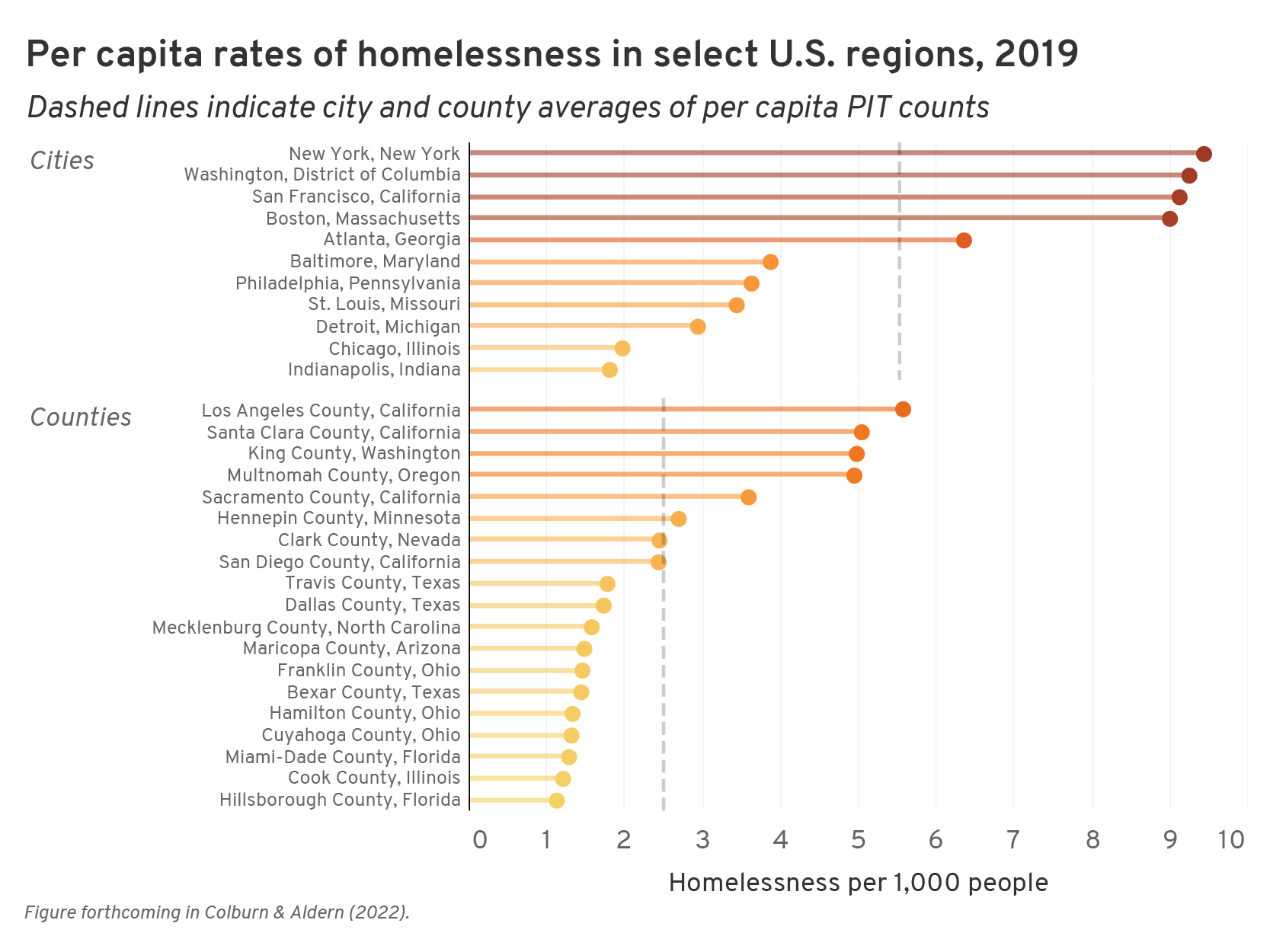The FWD #G23 • 482 Words
by Amelie Rives
If homelessness is a structural issue, then let’s address it with new structures.
This August, the National Low Income Housing Corporation (NLIHC) released their first of four webinars on Homelessness and Housing First. The topics of the webinars ranged from highlighting the challenges unhoused people face to addressing permanent housing solutions for the homeless. The second webinar of the bunch featured Dr. Gregg Colburn, co-author of Homelessness is a Housing Problem.
The book asks, what explains the substantial regional variation in per capita homelessness rates in the United States? Colburn outlined that when he and his co-author, Clayton Aldern, accounted for mental illness, job loss, or low incomes, otherwise conventional understandings of the causes of individual homelessness, per capita homelessness rates still vary regionally in the United States.

Colburn outlined that common explanations for homelessness, like rates of drug use, poverty, weather, or local politics, do not account for the regional variation in homelessness. When compared with rental vacancy and median contract rents, there is more of a correlation between tight housing markets and homelessness than between individual vulnerabilities (mental illness or job loss) and homelessness.
Homelessness is a Housing Problem theorizes that tight housing markets exacerbate the vulnerabilities that cause individuals to lose their homes. Homelessness, rather than being a problem of individuals, is a structural, housing market problem. Hence the name of the book.


Find the most recent point-in-time homelessness count for your area on Sourcebook.
In the final chapters of the book, Colburn and Aldern identify that homelessness requires a structural understanding and a structural response to it to properly alleviate it. To address homelessness, they argue, we must first fix our housing problem. Colburn suggests this is possible if we regionally invest in operating expenses for housing supports and housing services, home maintenance, and to make regional capital investments to construct more units.
The Greater Richmond Continuum of Care (GRCoC) is designing a plan to address this challenge and approach homelessness as the structural problem it is.
Regional continuums of care are non-profits tasked with homelessness service provision, data collection and coordination, and managing and disseminating federal grants that fund their regional work. Shelters, permanent supportive housing providers, and the like, are all members of the GRCoC and the continuum of care works to coordinate all of their actions to serve the unhoused.
In other words, the GRCoC is not an affordable housing developer. But, seeing the tight rental market throughout Richmond during COVID, GRCoC is considering an expansion of its role so it can influence the broader housing system to better serve their unhoused clients. They are working on a unique strategic plan with a single issue focus to identify “homelessness as a housing problem” and connect their clients to quality permanent housing. While this plan is being drafted, we look forward to seeing the outcomes of this unique approach.
Amelie Rives is a Senior Associate at HDAdvisors. She is currently assisting Homeward/GRCoC with their new strategic plan.
